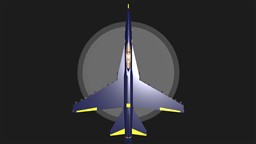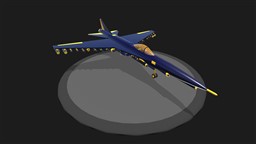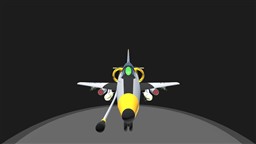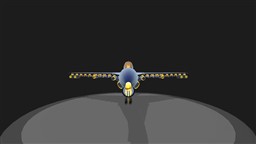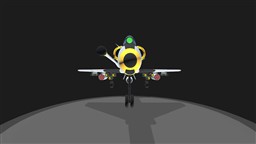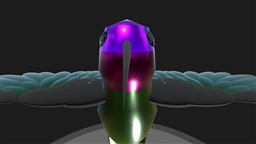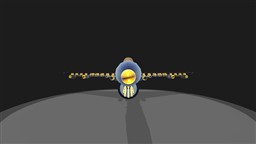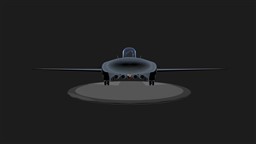120 RebelAlpha
Player Biography
RebelAlpha Aerospace Inc. - "First in performance, first in freedom!"
We develop aircraft and weapon systems for the freedom fighters of the revolution.
How to read designations:
RebelOmega-Aircraft-Loadout
Example: The "RebelOmega-XA1-NAS" would be a Experimental Light Attack/Ground Air Support aircraft with an Experimental Air Supremacy Loadout.
RebelOmega-TargetType&Features&WeaponType-ExperimetalDesignation (if experimental)
Example: The "RebelOmega-AGHNCM-X" is a Air to Ground, High Hypersonic, Nuclear Cruise Missile.
RebelOmega Aircraft Specialty Designations:
A: Light Attack/Ground Air Support
B: Bomber
C: Cargo/Utility/Transport
D: Drone
F: Fighter
H: Helicopter
X: Experimental
(No letter designation means the aircraft is likely intended/loaded for multirole missions.)
RebelOmega Specialized Loadout Designations:
SEAD: Suppression of Enemy Air Defenses (All, or mainly large AG weapons)
CAS: Close Air Support (All, or mainly small AG weapons)
AS: Air Supremacy (All, or mainly AA weapons)
X: Experimental (Experimental weapons equipped)
N: Nuclear (Nuclear weapons equipped)
(No letter designation indicates a default or multirole loadout.)
RebelOmega Weapons Systems Designations:
BVR: Beyond Visual Range (Long Range, Fire and Forget)
SR: Short Range (Semi-Active Radar)
AA: Air-to-Air
AG: Air-to-Ground
H: High Hypersonic
N: Nuclear
CM: Cruise Missile (Larger missiles)
M: Missile (Smaller missiles)
U: Unguided
TN: Tactical Nuke (Smaller blast yield than regular nukes)
B: Bomb
RP: Rocket Pod
T: Torpedo
AC: Autocannon (Large caliber, multiple barrels)
SC: Cannon (Large caliber, single barrel)
GG: Gatling Gun (Smaller caliber, multiple barrels)
WG: Wing Gun (Small caliber, single Barrel)
X: Experimental
https://randomfandom.cf
https://youtube.com/randomfandomofficial
https://twitch.tv/randomfandomofficial
Useful info:
https://en.wikipedia.org/wiki/Hypersonic_speed (Information about Hypersonic Speeds)
https://www.grc.nasa.gov/WWW/K-12/rocket/machu.html (Mach Calculator, takes altitude into calculations.)
https://www.simpleplanes.com/Forums/View/729507/SimpleCheats-a-slightly-comprehensive-guide (List of XML attributes)
https://www.simpleplanes.com/Forums/View/1172990/Flat-Bottomed-vs-Semi-Symmetrical-vs-Symmetrical-Airfoils-In-SP-and-RL (Explanation of different wing types)
https://www.simpleplanes.com/Forums/View/99055/The-Ultimate-building-guide (Some tips on building planes)
https://www.simpleplanes.com/Forums/View/1359166/How-To-Make-Decent-Planes (Some more tips on building planes)
My tips - Based on my own experience in this game and my aerospace knowledge (I took some aerospace engineering courses, and have been fascinated by planes ever since I was a little kid.)
Your center mass should be in front of your center of lift by a little bit (not too little though or you wont be able to fly level). Being nose heavy is better than being tail heavy, as long as you can still gain altitude and not stall. Dead weight can be rather handy!
The ideal thrust to weight ratio for supersonic aircraft seems to be somewhere between 2-3. Going too fast can destabilize your aircraft... or worse rip it apart. The engines in game seem to be rather underpowered. but they can still work (I was able to reach mach 1 @ 5000 ft on a fairly large multirole jet with 16 hardpoints).
Placing your engines more level with your fuselage will give you an easier to control aircraft. The center of thrust is not as nearly as important as the center of mass and center of lift however. You can use the fuselage and wings as fuel tanks, and for balancing the aircraft (but as you run out of fuel you may become less stable)
High wing designs are also more stable (hence a lot of civilian aircraft IRL have high wings, like the Cessna 172, Piper Cub, etc.) Placing the wing forward also makes the aircraft more stable, while placing it closer to the rear makes it less stable (and more aerobatic).
Your horizontal stabilizer wing area should be around 1/3 or your primary wing area. Your main wing should be around the length of your fuselage.
Also, don't forget to edit your control surfaces (keep in mind large control surfaces can give you more agility, but also destabilize your plane at high speeds).Don't put your weapon pylons too far back on your wings, or your weapons will turn against you (because your control surfaces slapped them and they got really angry!) Weapons flight path should be obstruction free (using stronger detachment force can also help). Guns should not be placed next to an un-tapered surface (otherwise you'll ruin your aircraft's fancy paint job!)
Keep in mind that weapon balance matters (failure to do so may result in injury or death.). This means not just your COL, COM, and COT (which as used, they can destabilize your aircraft)... but also the quantity and power. Placing weapon pylons (also called hardpoints) to close together can affect you ability to carry larger weapons (like the "Cleaver" Cruise Missile).
Place landing gears on your aircraft! These are important if you want to be able to takeoff and land without becoming a ball of flaming fury. Make sure they're spaced out far enough to prevent your aircraft from tipping, but also not too far back that your tail can't lower for takeoff. Tweak the strength and dampening for your landing gears to reduce bouncing during landing.
Learn the basics of flight and learn real aircraft designs. This can help you design better aircraft!
Have fun! If you are frustrated with the game, take a break and come back later. We don't have to worry about manufacturing costs (or deathly taxes and deadlines), the game will still be here for you!
These tips should be able to get you a flyable aircraft without a whole lot of testing. Hint: build with the COL, COM, and COT indicators on so you can make adjustments while you are building!
Mach calculator: https://www.grc.nasa.gov/www/k-12/airplane/mach.html

